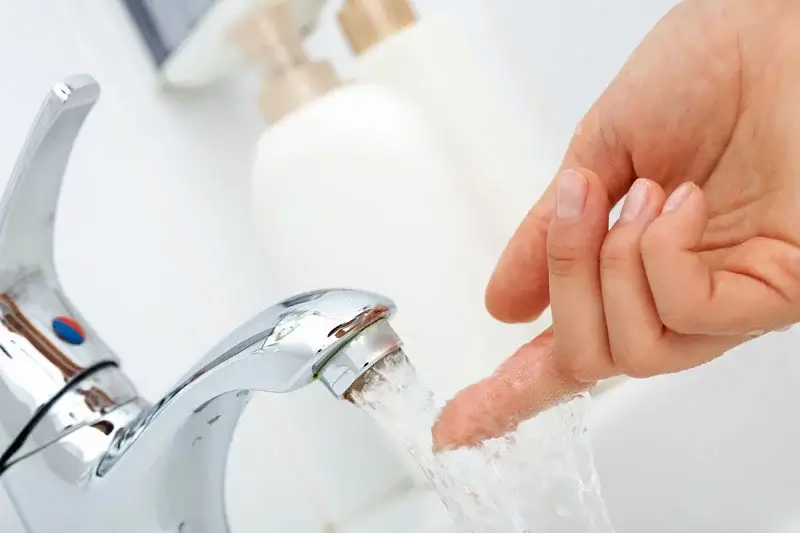
Understanding Hot Water Delivery
Waiting minutes for hot water wastes time, water, and energy. Understanding why your shower takes so long to heat up helps you find the right solution.
How Hot Water Systems Work
Hot water travels from your hot water system through pipes to your shower. The time it takes depends on several factors including distance, pipe size, system type, and more.
Common Causes of Slow-Heating Showers
1. Distance from Hot Water System
The most common reason for slow hot water delivery is simply distance. If your hot water system is far from your bathroom (like an outdoor unit serving an upstairs ensuite), water must travel a long distance through cold pipes. Why it's slow: Cold water sitting in pipes must be flushed out before hot water arrives. The longer the pipe run, the more cold water needs to be displaced.
2. Small Pipe Diameter
Older homes or poor plumbing design may use undersized pipes (10mm or 12mm instead of 15mm or 20mm) for hot water delivery. Smaller pipes hold less water volume but create the same delay time.
3. Low Water Pressure
Low pressure means water flows slowly through pipes, taking longer to reach your shower. This wastes even more water while waiting.
4. Failing Hot Water System
If your system takes much longer than it used to, it may be failing:
- Sediment buildup in the tank reduces efficiency
- Heating elements are failing or burnt out
- Thermostat is set too low or malfunctioning
- System is undersized for your household needs
- Gas pilot light or burner issues (gas systems)
5. Mixing Valve Issues
Tempering valves (TMVs) mix hot and cold water for safety. If faulty, they can restrict hot water flow or create temperature inconsistencies.
6. Heat Loss in Pipes
Uninsulated pipes, especially those running through walls, roof spaces, or outside, lose heat quickly. Even if hot water reaches the pipes, it cools before arriving at your shower.
Solutions for Faster Hot Water
Immediate Solutions
1. Reduce Distance to Hot Water
Consider relocating your hot water system closer to bathrooms (if practical). This is most feasible during renovations or when replacing an old unit.
2. Install Pipe Insulation
Insulating hot water pipes reduces heat loss and helps water stay hotter longer. This is an affordable solution that provides immediate benefits.
3. Upgrade to Larger Pipes
Replacing undersized pipes with 20mm diameter pipes increases flow rate and reduces wait time. Best done during renovations.
4. Install a Hot Water Recirculation System
Recirculation pumps continuously circulate hot water through your pipes, providing near-instant hot water at any tap. These systems can be:
- Full recirculation (dedicated return line)
- Demand recirculation (activated by button or sensor)
- Timer-based systems (operate during peak usage times) Note: While convenient, recirculation systems increase energy costs as they maintain pipe temperature constantly.
Hot Water System Upgrades
1. Instant/Continuous Flow Hot Water
Gas continuous flow systems heat water on-demand as it flows through the unit. They provide:
- Unlimited hot water supply
- Compact size (can be installed closer to bathrooms)
- Energy efficiency (no standing heat loss)
- Faster temperature response than storage tanks
2. Electric Instant Systems
Electric instant systems work for single bathrooms or low-demand applications. Multiple units can be installed at different locations for true instant hot water.
3. Heat Pump Systems
Heat pump hot water systems are highly efficient but may have slower recovery rates. Ensure proper sizing for your household.
4. Point-of-Use Systems
Small instant water heaters installed directly at the shower provide immediate hot water without pipe travel time. Ideal for:
- Distant bathrooms
- Granny flats
- Bathroom additions
Maintenance Solutions
Service Your Hot Water System
Annual servicing includes:
- Flushing sediment from tank
- Testing heating elements and thermostats
- Checking and replacing anode rod (prevents tank corrosion)
- Inspecting pressure/temperature relief valves
- Adjusting thermostat settings
Fix Water Pressure Issues
If low pressure is the cause, solutions include:
- Cleaning aerators and shower heads
- Replacing old gate valves
- Installing pressure-boosting pump
- Repairing leaking pipes (reduces available pressure)
Calculating Hot Water Wait Time
To estimate your wait time, consider:
- Pipe length: Measure the distance from hot water system to shower (including vertical runs)
- Pipe diameter: 15mm pipes hold about 0.2L per meter, 20mm hold about 0.3L per meter
- Flow rate: Typical shower flow is 7-10 liters per minute Example: A 15-meter run of 15mm pipe holds about 3 liters of water. At 9L/min flow, it takes about 20 seconds to reach the shower - plus the time for hot water to travel from the tank.
Professional Hot Water Solutions
Panther Plumbing Group helps Sydney residents enjoy faster hot water with:
- Hot water system replacements and upgrades
- Continuous flow system installation
- Hot water recirculation systems
- Pipe insulation and rerouting
- System maintenance and repairs
- Point-of-use heater installation Call 0404 939 121 for expert hot water solutions across Sydney. Free quotes on system upgrades.
Panther Plumbing Group
Licensed plumbing specialists serving Sydney since 2015. NSW Licence #369675C. Our team of certified plumbers brings 10+ years of combined experience in residential, commercial, and emergency plumbing services across all Sydney suburbs.



